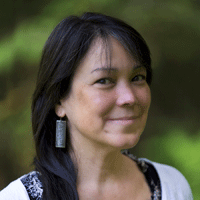Gender Justice: From The Editors
- Let’s Build a Bigger Feminism
- Share

Let’s Build a Bigger Feminism

As the Democratic presidential primary drama unfolds, there’s a lot of talk about glass ceilings, of how far women have come, and of how beneficial it would be for women to have a woman in one of the world’s most powerful positions.
But here’s a puzzle: Even as the nation is considering electing a woman president, more than half the states are aggressively taking away women’s access to reproductive health care and eroding the right to legal abortion that Roe v. Wade secured more than 40 years ago. Women remain targets of sexual violence everywhere. Then there’s the pay gap — the median wage for a woman working full-time is 78 percent of the median for a man. And that gap has held for 15 years.
Why, after more than a century of feminism, are we still stuck?
One problem seems to be that there are significant differences in the political priorities of various advocates for women’s equality. To some, progress looks like a woman president or more women CEOs. To others, this leaves out too many women to feel like meaningful change. In this country, 70 percent of the poor are women and children. When you are struggling to hold a family together, raise children, pay bills, and improve your community, it’s easy to feel that glass ceilings are a pretty small part of the problem. How can feminism work to address the issues of all women?
To answer that, we called in an expert. Dani McClain is a journalist who has written extensively on reproductive justice, race, and feminism, most recently as a contributing writer for The Nation and a fellow with the Nation Institute. As a guest editor for ����ý, McClain introduced us to writers and activists who are making a powerful case that if feminism doesn’t work to improve the lives of poor women and communities of color, it’s not enough. In her article, “This ‘New’ Feminism Has Been Here All Along,” she describes the kind of feminism that gains its strength from being inclusive.
Men and gender-nonconforming people also stand to benefit from an inclusive feminism, which seeks to do away with narrow definitions of masculinity that make all of us unsafe.
And that’s how our ����ý issue on women’s rights turned into an issue about gender justice.
What does gender justice look like? A society where social and economic policy support the roles of parents, caregivers, and community-builders. Where your health and well-being and access to reproductive care aren’t affected by your race, class, or gender identity. Where the current fight for Trans rights would be embraced as a fight for human rights, and where your choices around gender expression can liberate you rather than hold you back.
This collection of articles shows that women’s equality isn’t just a women’s issue. Feminist goals should belong to everyone because strong feminism benefits us all.

|
Dani McClain
reports on race, parenting and reproductive health. McClain’s writing has appeared in outlets including The New York Times, TIME, The Atlantic, Harper’s BAZAAR and Colorlines. Her work has been recognized by the National Lesbian and Gay Journalists Association, the National Association of Black Journalists, Planned Parenthood Federation of America, and she’s received a James Aronson Award for ����ý Journalism. McClain is a contributing writer at The Nation. She was a staff reporter at the Milwaukee Journal Sentinel and has worked as a strategist with organizations including Color of Change and Drug Policy Alliance. Her book, We Live for the We: The Political Power of Black Motherhood, was published in 2019 by Bold Type Books and was shortlisted in 2020 for a Hurston/Wright Legacy Award. She was the Cincinnati public library’s Writer-in-Residence in 2020 and 2021. She is based in Ohio and speaks English.
|

|
Tracy Matsue Loeffelholz
is the former creative director at ����ý, where she directed artistic and visual components of ����ý Magazine, and drove branding across the organization for nearly 15 years. She specializes in infographic research and design, and currently works with The Nation, in addition to ����ý She previously worked at The Seattle Times, The Virginian-Pilot, Scripps Howard Newspapers, Rocky Mountain News, The Denver Post, The Connecticut Post, The San Diego Tribune, The Honolulu Advertiser. She lives on Bainbridge Island, Washington, and currently serves on the board of the Bainbridge Island Japanese American Exclusion Memorial Association. Tracy speaks English.
|
